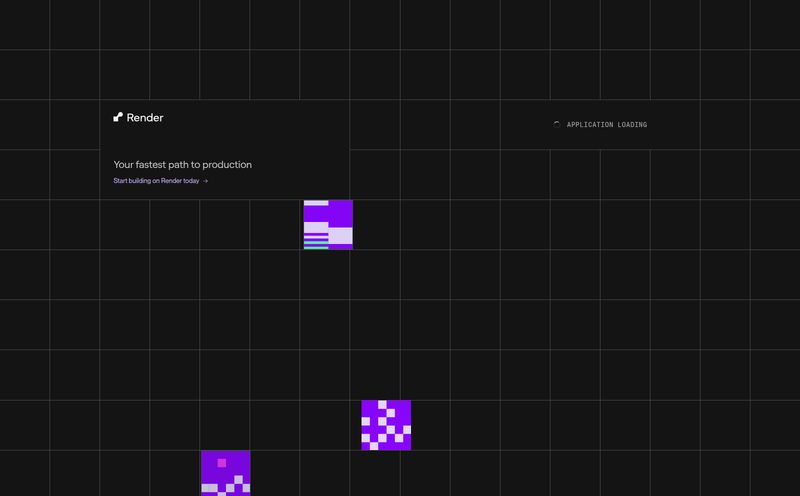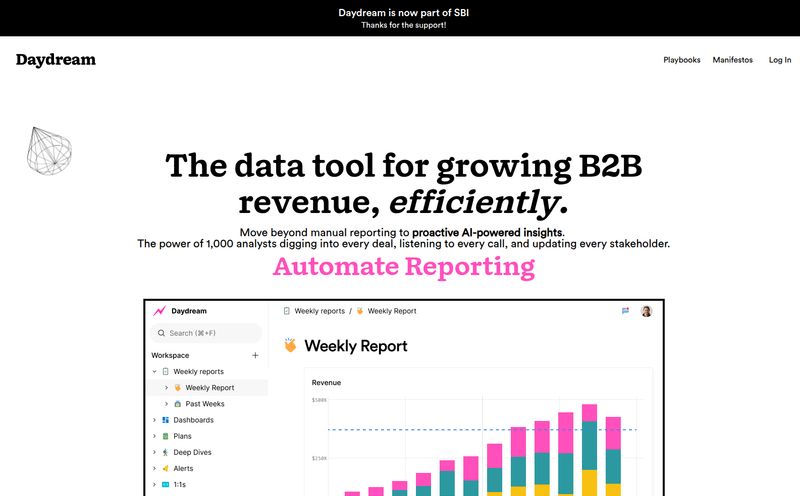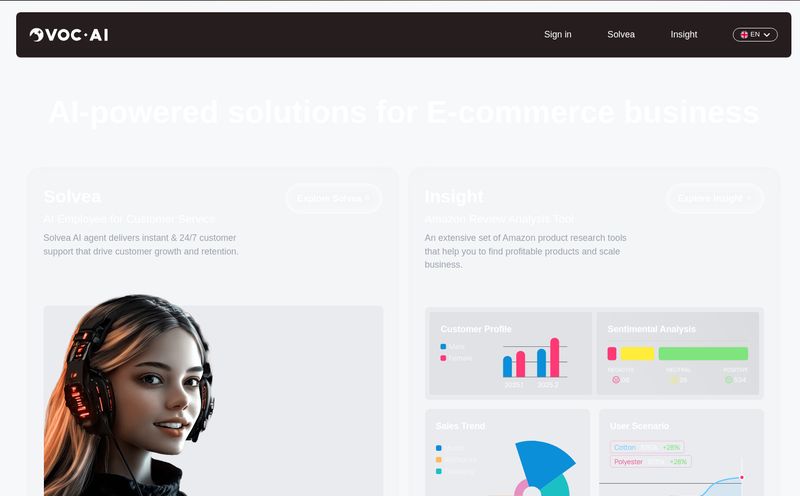I’ve been in the SEO and digital marketing game long enough to see trends come and go faster than fast fashion seasons. One minute, it’s all about long-form content; the next, it's 15-second videos. But the current AI wave feels different. It feels... stickier. Especially in creative fields like fashion, where the potential is just staggering.
So, a little while back, I caught wind of a tool called CostumePlayAI. The name itself is clever, right? It promised an AI Fashion Studio, a virtual stylist, and a way for brands to generate professional photoshoots without, you know, the soul-crushing expense and logistics of an actual photoshoot. My curiosity was definitely piqued. I've worked with enough startup fashion brands to know their biggest bottleneck is almost always high-quality product photography.
I bookmarked the site, planning to give it a proper look. And today was the day. I brewed my coffee, sat down, clicked the link and...
Page Not Found.
You gotta love the tech world. One day you're the next big thing, the next, you're a 404 error. But this isn't a eulogy. The disappearance of one tool doesn't kill the idea. And the idea behind CostumePlayAI is too interesting to just let go. So let's talk about what it was supposed to be, and what it means for the future of fashion marketing.
What Exactly Was CostumePlayAI Supposed to Be?
From what I gathered before it went poof, CostumePlayAI was positioning itself as an all-in-one AI-powered solution for both consumers and fashion businesses. Think of it as a digital dressing room meets a photography studio. The core promise was to use artificial intelligence to completely reimagine how we interact with clothing online. No more guessing if that dress will actually look good on you, no more brands spending a fortune to shoot a single collection.
It was built around a few key features that, frankly, sound pretty amazing:
- AI Fashion Studio & Photoshoot Generator: The big one. The ability to create entire fashion catalogs with AI models wearing your actual clothing designs.
- Virtual Try-On: Allowing customers to see what an item looks like on a model that resembles them, or even on a custom AI model trained on their own photos.
- Personalized Fashion Inspiration: An AI stylist that could help you discover new looks and styles.
- Tools for Fashion Businesses: A whole suite designed to help smaller brands scale their visual content creation and marketing efforts.

Visit CostumePlayAI
The Big Idea: AI-Powered Virtual Try-Ons and Photoshoots
Let's break down the two most groundbreaking promises here, because this is where the real magic was supposed to happen.
A New Reality for Online Shopping
The virtual try-on isn't a brand new concept; we've seen versions of it with glasses from Warby Parker and AR features from bigger retailers. But CostumePlayAI’s approach seemed more personal. By training a custom AI model with your own photos, you could get a much more realistic preview. Can you imagine the impact on conversion rates? And more importantly, on return rates? The fashion industry’s return problem is massive, fueled by customers who bracket—buying multiple sizes of the same item with the full intention of returning most of them. A truly accurate virtual try-on could be a game-changer for sustainability and profitability.
Killing the Traditional Product Photoshoot (Almost)
This is the part that gets my marketing brain buzzing. A traditional fashion photoshoot is a beast. You're coordinating models, photographers, makeup artists, stylists, locations, lighting... the list goes on and the costs skyrocket. I once had a client, a small indie designer, who spent over half her launch budget on a single day's shoot. It's a huge barrier to entry.
An AI photoshoot generator democratizes this. Suddenly, that same indie designer can produce an entire, diverse catalog of images for a fraction of the cost. She can show her designs on a range of body types and ethnicities, something that's logistically complex and expensive to do in a traditional shoot. This isn't just about saving money; it’s about better, more inclusive representation.
For the Indie Designer and the Growing Brand
And that’s the real promise I saw in a tool like this. It’s not for the Guccis and Pradas of the world (though they’re probably building their own in-house versions). It’s for the little guys. The Etsy seller, the Instagram boutique, the designer with a dream and a Shopify account. It levels the playing field, allowing smaller businesses to present their products with the same polish as established giants. Generating professional marketing content, social media assets, and product listings without a five-figure budget? Yes, please.
Plus, the fact that they mentioned European hosting was a subtle but important nod to data privacy—a growing concern for users who might be hesitant to upload photos of themselves.
The Catch – What Were the Downsides?
Of course, it couldn’t all be sunshine and AI-generated rainbows. There were a few potential hitches in the plan. The platform required 10-20 photos to train a custom model, which could be a hurdle for some users. Then there was the 30-minute training time.
Honestly, neither of those seems like a dealbreaker to me. Thirty minutes is the time it takes to have a coffee and answer a few emails. Compare that to the weeks of planning a photoshoot, and it's nothing. But the real challenge, the one that always comes up with generative AI, was the “reliance on AI for accurate style represntation.”
"AI is great at mimicking, but it's not always perfect at understanding the physics of the real world. Getting the delicate drape of silk or the chunky texture of a wool sweater just right is incredibly difficult."
We’ve all seen AI images with six-fingered hands or bizarrely twisted limbs. The same applies to fashion. Would the clothes hang realistically? Would the colors be true? Would the fit look authentic? These are the questions that would determine if the tool was a gimmick or a genuine solution.
The Mystery of the Missing Website
So, we come back to the 404 error. What happened to CostumePlayAI? In the volatile world of AI startups, it could be anything. They could have run out of funding (the most likely scenario). They could have been quietly acquired by a larger company who wanted their tech. They might be in the middle of a major pivot and relaunching under a new name. It's impossible to say for sure without an official announcement.
The empty pricing page was probably a clue. Often, when a startup is struggling to find its footing or is about to shut down, pricing is the last thing they finalize. It's a classic sign of a project in limbo.
So, Is the AI Fashion Dream Dead?
Absolutely not. CostumePlayAI may have vanished (for now), but the concept is very much alive. The demand for this technology is undeniable. It solves too many real-world problems for both businesses and consumers to simply fade away. Other companies are tackling this from different angles, and the tech is only getting better.
The journey of CostumePlayAI is a perfect snapshot of the current AI gold rush: full of brilliant ideas, incredible potential, and a high risk of fizzling out. But for every one that disappears, another one, perhaps better funded or with a sharper strategy, will take its place. The virtual try-on and the AI-generated photoshoot are coming. It's not a matter of if, but when and who will finally crack the code.
Frequently Asked Questions about AI Fashion Tools
- What is an AI fashion studio?
- An AI fashion studio is a software platform that uses artificial intelligence to generate fashion-related content. This can include creating images of models wearing specific clothing items (AI photoshoots), offering virtual try-on experiences, or providing personalized style recommendations.
- How does virtual try-on technology work?
- Typically, it involves using a shopper's measurements or photos to create a digital avatar. The technology then drapes 2D or 3D models of clothing onto the avatar, simulating how the item would fit and look on the person's body shape, aiming to provide a realistic preview before purchase.
- Is AI good enough to replace fashion photographers?
- Not entirely, at least not yet. AI is a powerful tool for creating clean, consistent product shots for e-commerce catalogs at scale. However, for editorial, branding, and campaign imagery that requires storytelling, human emotion, and artistic direction, human photographers remain irreplaceable. AI is a supplement, not a full replacement.
- Why do AI models need multiple photos to train?
- AI needs a good amount of data to understand a subject from multiple angles, in different lighting, and with various expressions. By analyzing 10-20 photos, the AI can build a more accurate and flexible 3D representation of a person or object, leading to more realistic final images.
- What happened to the CostumePlayAI website?
- The exact reason is unknown, as the website currently shows a "Page Not Found" error. This could be due to several reasons common with tech startups, such as ceasing operations, being acquired by another company, or preparing for a relaunch under a new brand.
Final Thoughts
While the story of CostumePlayAI seems to have hit an abrupt pause, it’s a fascinating case study in the ambition fueling the AI revolution. The problems it aimed to solve are real and painful for many in the fashion industry. The dream of a low-cost, high-quality, personalized fashion experience online is still out there, waiting for the right team with the right tech to make it a reality. I, for one, will be keeping my eyes peeled for whoever picks up this torch next.
Reference and Sources
For further reading on the intersection of AI and fashion, I'd recommend checking out publications that regularly cover this space, such as:



